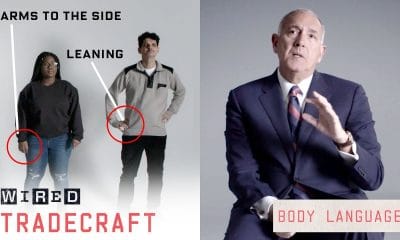Popular Science
World’s Rarest Lobster?! (Cotton Candy)
A lobster found off the coast of New Hampshire has a “cotton candy” coloring so rare that it’s estimated to exist at a rate of just 1 in 100 million. “One in 100 million cotton candy lobster caught in New Hampshire,” Popular Science: #science #sciencefacts #weird #lobster #amazing
Popular Science
The Mind Control Glasses That Ended in Lawsuits
Thank you to Perplexity for sponsoring this video! Check out Perplexity for all of your holiday shopping at Warning: This video contains flashing lights which may not be suitable for photosensitive epilepsy. Flashing Lights Begin (6:46) Skip Flashing Lights (6:59) Can a pair of flashing retro tech glasses and some CDs sync your brainwaves, train…
Popular Science
The Man Who Lived with No Brain
Thanks to DuckDuckGo for sponsoring this video! Try Privacy Pro free for 7 days at Further Reading/Viewing: “The Man with a Shattered World: The History of a Brain Wound,” by A. R. Luria. THE MAN WITH A SHATTERED WORLD: THE HISTORY OF A BRAIN WOUND by A. R. Luria; Translated from the Russian by Lynn…
Popular Science
How to Make a YouTube Video in 1987
Decades before software like Premiere and iMovie made video editing cheap, easy, and accessible for everyone, the only option was chaining a conglomerate of vintage 80s technology – multiple camcorders or VCRs and a TV – to craft custom analog video. Then the Videonics system changed tech history forever. With professional-grade setups costing up to…
-

 Science & Technology5 years ago
Science & Technology5 years agoNitya Subramanian: Products and Protocol
-

 CNET5 years ago
CNET5 years agoWays you can help Black Lives Matter movement (links, orgs, and more) 👈🏽
-

 People & Blogs3 years ago
People & Blogs3 years agoSleep Expert Answers Questions From Twitter 💤 | Tech Support | WIRED
-

 Wired6 years ago
Wired6 years agoHow This Guy Became a World Champion Boomerang Thrower | WIRED
-

 Wired6 years ago
Wired6 years agoNeuroscientist Explains ASMR’s Effects on the Brain & The Body | WIRED
-

 Wired6 years ago
Wired6 years agoWhy It’s Almost Impossible to Solve a Rubik’s Cube in Under 3 Seconds | WIRED
-

 Wired6 years ago
Wired6 years agoFormer FBI Agent Explains How to Read Body Language | Tradecraft | WIRED
-

 CNET5 years ago
CNET5 years agoSurface Pro 7 review: Hello, old friend 🧙



















@johnnydarling8021
September 12, 2024 at 11:08 am
*Lobster Jump Scare*
@_DewGaming
September 12, 2024 at 11:09 am
Full Odds Shiny Lobster
@theflunkoutdude90
September 12, 2024 at 12:42 pm
*Phantom of the Opera*
@test-uy4vc
September 12, 2024 at 12:46 pm
At least we got a crazy lobster before GTA 6
@ImMacke3000
September 12, 2024 at 2:21 pm
*Blue lobster jumpscare*
@robertkerr4199
September 13, 2024 at 12:00 am
I dunno… spending my life in my natural habitat vs spending my life in a scientists aquarium… tough call, but I’m leaning toward natural habitat as providing the better life.
@AthAthanasius
September 13, 2024 at 10:47 am
It’s certainly better than being caught *and eaten*.
@robertkerr4199
September 13, 2024 at 1:50 pm
@@AthAthanasius not really. That’s how life goes.
@frzstat
September 17, 2024 at 4:53 am
Life in an aquarium is probably better than becoming a lobster roll. (Now I’m hungry.)